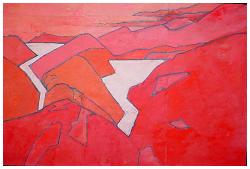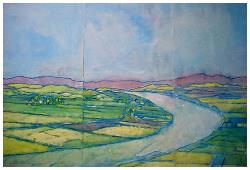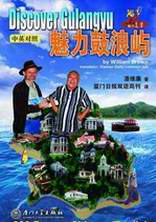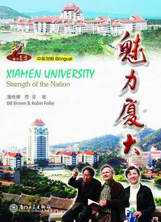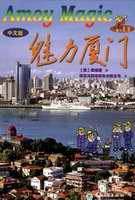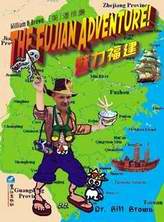![]() Click
to
Access
Click
to
Access
OUTSIDE China
![]() Click
to Access
Click
to Access
INSIDE
China ![]()
TRAVEL LINKS
![]() Xiamen
Xiamen
![]() Gulangyu
Gulangyu
![]() Jimei
Jimei
![]() Tong'an
Tong'an
![]() Jinmen
Jinmen
![]() Zhangzhou
Zhangzhou
![]() Quanzhou
Quanzhou
![]() Wuyi
Wuyi
![]() #1Fujian
Sites!
#1Fujian
Sites!
![]() Fujian
Foto Album
Fujian
Foto Album
![]() Books
on Fujian
Books
on Fujian
![]() Readers'Letters
Readers'Letters
![]() Ningde
Ningde
![]() Zhouning
Zhouning
![]() Longyan
Longyan
![]() Sanming
Sanming
![]() Putian
Putian
![]() Bridges
Bridges
![]() Travel
Info,
Travel
Info,
![]() Hakka
Roundhouses
Hakka
Roundhouses
![]() Travel
Agents
Travel
Agents
MISC. LINKS
![]() Amoy
People!
Amoy
People! ![]()
![]() Darwin
Driving
Darwin
Driving ![]()
![]() Amoy
Tigers
Amoy
Tigers
![]() Chinese
Inventions
Chinese
Inventions
![]() Tibet
in 80 Days!
Tibet
in 80 Days!![]()
![]() Dethroned!
Dethroned!
![]()
![]() Misc.Writings
Misc.Writings
![]() Latest
News
Latest
News
![]() Lord
of Opium
Lord
of Opium
![]() Back
to Main Page
Back
to Main Page
![]() Order
Books
Order
Books![]() Xiamenguide
Forum
Xiamenguide
Forum 
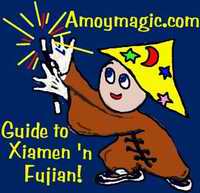
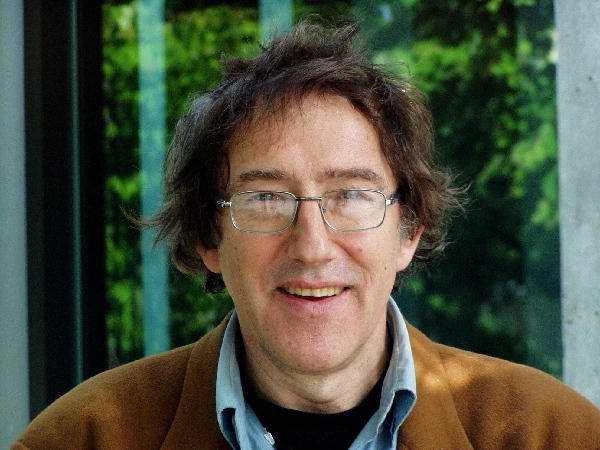
Click
Here to E-mail Dr. Poznanski
Kazimierz Z. Poznanski, Professor
Jackson School of International Studies
PO Box 353 650
University of Washington
Seattle WA 98195
Click Here for "Feeling
China--Art as Jazz," by Dr. Poznanski
Click Here for Critics Reviews of Poznanski's
Work
Click Here for "Chinese Beauty",
by Dr. Kaz.
Click Here for list of Dr. Kaz' paintings
Click Here for Teng Hiok Chiu page (comprehensive
biography, and pictures and descriptions of over 40 major works--all copyright
by Prof. Kaz).
Click Here for "Happy Places: Landscaping
by Teng Hiok Chiu" (by Prof. Kaz)
Did you know Xiamen is now one of the world's greatest producers of original
and reproduction oils? Click
Here for more info!
Back to top
Prof. Kazimierz Poznanski
is both a collector of paintings and painter himself. He discovered these
two passions in his native Poland and continued them after moving to the
United States in 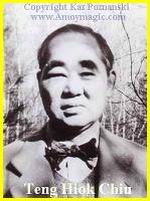 1980.
He has been a professor at Cornell, Northwestern and since 1987 at the
University of Washington. All the way along, he has assembled many paintings
from the modernist period, while he also practiced painting himself. About
ten years ago he started specializing in the collection of Chinese western-style
paintings from the modernist period of 1920-1950. The core of his collection
consists of a large group of oils by the Royal Academy graduate Teng Hiok
Chiu (1903-1972). For the fist time since Chiu’s passing away, they
were put on display at the Frye Art Museum in 2003. The show attracted
forty-thousand visitors and brought this forgotten painter back in the
spotlight. This interest in Chinese modernists turned Poznanski, an artist,
to traditional Chinese “mountain and water” paintings on rice
paper. His works, mainly monumental landscapes executed in the informed
by Taoism Chinese art tradition, have been shown numerous times. They
were exhibited in solo installations in 2002 at the Sichuan Art Museum
in Chengdu; in 2004 at the Xiamen City Gallery in Xiamen; in 2004 at the
“Art Center” in Seattle; and in 2005 at the “Upper Gallery”
in Toronto, Canada. While in Toronto, he was interviewed by four different
cable television channels. In 2005 the leading Chinese magazine “Art”
directed by the China Artist Association prepared a feature article about
his Chinese-style landscapes and published it in July 2005 issue with
seven images of his landscapes.
1980.
He has been a professor at Cornell, Northwestern and since 1987 at the
University of Washington. All the way along, he has assembled many paintings
from the modernist period, while he also practiced painting himself. About
ten years ago he started specializing in the collection of Chinese western-style
paintings from the modernist period of 1920-1950. The core of his collection
consists of a large group of oils by the Royal Academy graduate Teng Hiok
Chiu (1903-1972). For the fist time since Chiu’s passing away, they
were put on display at the Frye Art Museum in 2003. The show attracted
forty-thousand visitors and brought this forgotten painter back in the
spotlight. This interest in Chinese modernists turned Poznanski, an artist,
to traditional Chinese “mountain and water” paintings on rice
paper. His works, mainly monumental landscapes executed in the informed
by Taoism Chinese art tradition, have been shown numerous times. They
were exhibited in solo installations in 2002 at the Sichuan Art Museum
in Chengdu; in 2004 at the Xiamen City Gallery in Xiamen; in 2004 at the
“Art Center” in Seattle; and in 2005 at the “Upper Gallery”
in Toronto, Canada. While in Toronto, he was interviewed by four different
cable television channels. In 2005 the leading Chinese magazine “Art”
directed by the China Artist Association prepared a feature article about
his Chinese-style landscapes and published it in July 2005 issue with
seven images of his landscapes.
Back to top
Poznanski’s understanding of art:
The role of art is to reflect the happy side of life, and it is life itself that the art should be focused upon anyway. While each individual life has some bad turns, there is no reason to be preoccupied with them. The fact of life, of our existence, is itself a happy occurrence. The continuity of life is made possible by the right choices we make. In other words, life continues only if we live in harmony with each other. Thus, the role of art is not only to project happiness, but also to stress harmony. There is perhaps no better genre to deliver this message than paintings of nature. It is so, since nature is life, and thus, it embodies both happiness and harmony. In recent decades this particular message has been largely lost in western painting. Western art has embraced a different, opposite message – that of distress and conflict. They reflect the horrific modern-era experiences – social revolutions, economic depressions and the world wars. While these are universal experiences, Eastern painting, as that of China, has preserved the message of happiness and harmony. In China, as well as in Japan or Korea, two nations that borrowed so much from China, this message is rooted in the Taoist philosophy. It is this philosophy that argues that nature is life, and thus each corner of nature is a happy place of harmony. Nature represents a moral order, where all elements – representing either yin or yang – live happily in harmony. What brings these various elements closest to each other is the feeling of love. It is thus love that the human life is a product of. Chinese traditional art, which takes the center place also in modern China, is completely in the service of spreading this moral message. This is why it is focused on mountain and water painting, where mountain, representing the male element – yang, meets water, the female element – yin, to become a unity. In keeping with this philosophical tradition Chinese, paintings show only the bright side of life. This is why these landscapes are incredibly peaceful, simply charming and filled with energy. My paintings are true to the basic principles of this tradition of “mountain and water” paintings, although they also look quite western. They are definitely “Chinese” in terms of their overarching message that life comes from love. But they are not equally “Chinese” in terms of technique. In tune with this tradition I always use ancient Chinese pigment applied on rice paper and I build my paintings with lines and flat spaces. However, my art not only looks more laborious, but also more colorful, more geometric and more vibrant than the typical Chinese landscape scrolls.
Art
Critics Review Dr. Poznanski's Work
Back to top
Professor Jerzy Kolacz, Member of the Royal Canadian
Academy of Art April 10, 2005, Toronto, Ontario, Canada
“I went to Kazimierz’s exhibition at the Upper Gallery in
Toronto with mixed feelings. For an economist to also be a painter just
did not sound right. I was afraid that I would have to witness another
failed trial by an amateur artist. But I was nicely surprised. I found
very interesting, large-scale synthetic landscapes that nevertheless were
still filled with life and truth. Forms were defined by lines completed
with color -- and all of this in a full harmony. Simplicity, deliberation
and power of expression impressed me with their maturity. Not often would
one see in these days so interesting a landscape painting. Nature often
overwhelms the painter with its beauty and perfection. But here the artist
offers a very intriguing analysis of nature and provides us with a logical
description of what he has seen in a way that is free of banal emotions
and references. In a conversation, the artist told me that he continuously
faces a dilemma, namely whether he is an economist or an artist. To me,
he has always been an artist, although this has not prevented him from
being a well-respected economist. A person that is both thoughtful and
tender can reconcile these presumably contradictory forms of creativity.”
Back to top
Raymond E. Tubbs, Art Critic, March 25, 2005,
East Hartford
“I first met Kazimierz Poznanski in 1998,
he a passionate collector of the painter, Teng H. Chiu (1903-1972), and
I an art consultant who used to run his own gallery. Like Professor Poznanski,
I have found this Chinese-born, western-trained painter to be an extraordinary
artist with an extraordinary life. While his collection of Chiu paintings
grew, our initial business-like relationship quickly evolved into one
of mutual respect and friendship. In May of 2003, Professor Poznanski
invited me to deliver a lecture at a symposium on Chiu at the University
of Washington in conjunction to a large and handsomely presented exhibition
at the Frye Art Museum in Seattle. The theme of my lecture was how this
Chinese by birth, but very western artist, used a first-class education
in western techniques of painting and art history to gradually reclaim
and use his Chinese roots.
"While a guest of my new friend, I was invited by
him to see some of his own artwork, which he had only recently been inspired
to begin doing. To my astonishment I discovered this almost driven collector
of Chiu's work had now also become Chiu's student. But not a mere student,
but one of talent, and one of whom his master could be proud. Laid out
before me on the living room floor was a wonderful surprise: two large
groups of black ink drawings (around 9 x 12" each) -- both groups
an intuitive series done with amazing spontaneity and sophistication.
Back to top
The first series was presented in a vertical grouping of nine rows of three vertical drawings each. Each work of the bottom row had, from top to bottom, one bold black line, surely done and placed. In the successive five rows, each of these beautiful lines developed into a fully realized plotted plant of spiky leaves on the top row. The viewer sees a black line become a potted plant, or in reverse a potted plant reduced to the single line that inspired it. The other and more complicated series consisted of three groups of three rows with three horizontal drawings in each. The drawings related to each other horizontally, with each row becoming slightly more complex. The bottom group of nine consisted of grasses or spiked leaves, and the next two groups with successively more complex or variegated vegetation with seed pots. The lines were applied with graceful confidence, and an intuitive sense of the rightness of their place in the composition -- a good thing, as there was no place to hide mistakes. I was truly impressed.
"In many ways the student began where his master
left off. This becomes more evident in his color paintings of landscapes
and towns or combinations of both where Professor Poznanski uses a limited
palette -- tonal variation of only two or three colors applied in small
areas or fields of a single color. The landscapes are broken up by painted
lines into basic geometric sections, as are the buildings of towns and
villages into their most simplified cubistic shapes. All the fragmented
shapes of stylized simplicity are painted up to their defining lines.
This is all very much influenced or informed by Chinese painting in general,
and Chiu in particular. However one should be careful, including the artist
himself, of not putting too much emphasis on the Chinese qualities of
the work.
Back to top
Professor Poznanski does not limit himself to the Chinese philosophic sense of harmony in everything, which demands low key, carefully orchestrated tonal values, and drawing fused to the elegant dynamics of calligraphy. In "Ming Town Roofline," for example, the painting of village roofs in pale tones of soft blues and greens is saved from harmonic boredom by one dissonant note of bold yellow. Intuitively inserted in just the right place, it gives the work necessary dynamic vitality -- it makes it come alive. In "Purple Yellow" the layered floating mountains found in a traditional Chinese landscape are painted from top to bottom from yellow with some purple to purple with yellow. This masterful use of only two complimentary colors achieves not only the illusion of great perspective depth needed for this vertical panorama, but also the pulsating vitality of simultaneous contrast.
"The architectural cubes of "Green House - Gulangyu
Island" are depicted with flattened perspective and devoid of any
detail beyond their basic shapes. But the bold colors (again of a very
limited palette) concentrated on both ends, and not the middle, of this
very horizontal work force the eyes to jump from one end to the other,
and thus the use of a very different type of dynamics brings this work
to life. In a work like "Intimate Landscape," one can see Western
sensibilities, perhaps even Polish, especially in the choices of often
bold colors and their tonal dynamics unlike anything one would see in
traditional Chinese art.
Back to top
"In certain profound ways, as Chiu was a Chinese man trained as a western artist, Professor Poznanski is a Polish man trained as a Chinese artist. And just as his western training eventually freed Chiu to reclaim his Chinese roots, I suspect Professor Poznanski's self teaching will free him to lay artistic claims to that of his western or Polish cultural heritage that allows for the expansion of inspiration, technique and points of reference. Regardless, Poznanski has the potential of being a recognized artist of distinction with an original and singular vision."
LIST OF PAINTINGS
Traditional Chinese pigment on rice paper
1. “Intimate Landscape”, 54 x 81, 2004
2. “Hidden Lake”, 54 x 81, 2005
3. “Yellow River”, 54 x 81, 2004
4. “Greenish Slopes”, 54 x 81, 2005
5. “River Bend”, 54 x 81, 2004
6. “Secret Ties”, 54 x 81, 2004
7. “Fertile River”, 54 x 81, 2005
8. “Ming Roofs - Langzhong”, 54 x 108, 2004
9. “Dancing Roofs – Near Beibei”, 27 x 54, 2004
10. “Reddish House – Gulangyu Island”, 27 x 54, 2004
11. “Beijing Hutong”, 27 x 54, 2005
12. “Street Turn – Near Beibei”, 27 x 54, 2004
13. “Green House – Gulangyu Island”, 27 x 54, 2004
14. “Winter Flower”, 54 x 27, 2005
15. “Ancient Shrub”, 54 x 27, 2004
16. “Yellow Mountain”, 54 x 27, 2005
17. “Erotic Impulse”, 54 x 27, 2004
TRAVEL
LINKS  Favorite
Fujian Sites
Favorite
Fujian Sites  Fujian
Foto Album
Fujian
Foto Album  Xiamen
Xiamen
 Gulangyu
Gulangyu
 Fujian
Guides
Fujian
Guides  Quanzhou
Quanzhou
 Zhangzhou
Zhangzhou
 Longyan
Longyan
 Wuyi
Mtn
Wuyi
Mtn  Ningde
Ningde
 Putian
Putian
 Sanming
Sanming
 Zhouning
Zhouning
 Taimu
Mtn.
Taimu
Mtn.  Roundhouses
Roundhouses
 Bridges
Bridges
 Jiangxi
Jiangxi
 Guilin
Guilin
 Order
Books
Order
Books
 Readers'
Letters
Readers'
Letters
Last Updated: May 2007
![]()
DAILY
LINKS
![]() FAQs
Questions?
FAQs
Questions?
![]() Real
Estate
Real
Estate
![]() Shopping
Shopping
![]() Maps
Maps
![]() Bookstores
Bookstores
![]() Trains
Trains
![]() Busses
Busses
![]() Car
Rental
Car
Rental
![]() Hotels
Hotels
![]() News
(CT)
News
(CT)
![]() Medical
& Dental
Medical
& Dental
![]() YMCA
Volunteer!
YMCA
Volunteer! ![]()
![]() XICF
Fellowship
XICF
Fellowship
![]() Churches
Churches
![]()
![]()
![]() Temples
Temples![]()
![]() Mosque
Mosque
![]() Expat
Groups
Expat
Groups
![]() Maids
Maids
![]() Phone
#s
Phone
#s
EDUCATION
![]() Xiamen
University
Xiamen
University
![]() XIS(Int'l
School)
XIS(Int'l
School)
![]() Study
Mandarin
Study
Mandarin
![]() CSP(China
Studies)
CSP(China
Studies)
![]() Library
Library
![]() Museums
Museums
![]() History
History
DINING
![]() Restaurants
Restaurants
![]() Asian
Asian
![]() Veggie
Veggie
![]() Junk
Food
Junk
Food
![]() Chinese
Chinese
![]() Italian
Italian
![]() International
International![]()
![]() Visas
4 aliens
Visas
4 aliens
RECREATION
![]() Massage!
Massage!
![]() Beaches
Beaches
![]() Fly
Kites
Fly
Kites
![]() Sports
Sports
![]() Boardwalk
Boardwalk
![]() Parks
Parks
![]() Pets
Pets
![]() Birdwatching
Birdwatching
![]() Kung
Fu
Kung
Fu ![]() Hiking
Hiking
![]() Music
Events
Music
Events
![]() Festival&Culture
Festival&Culture
![]() Humor&
Humor&![]() Fun
Fotos
Fun
Fotos![]()
BUSINESS
![]() Doing
Business
Doing
Business
![]() Jobs!(teach/work)
Jobs!(teach/work)
![]() Hire
Workers
Hire
Workers
![]() Foreign
Companies
Foreign
Companies
![]() CIFIT
(Trade Fair)
CIFIT
(Trade Fair)
![]() MTS(Translation)
MTS(Translation)
![]()
Back to Top


